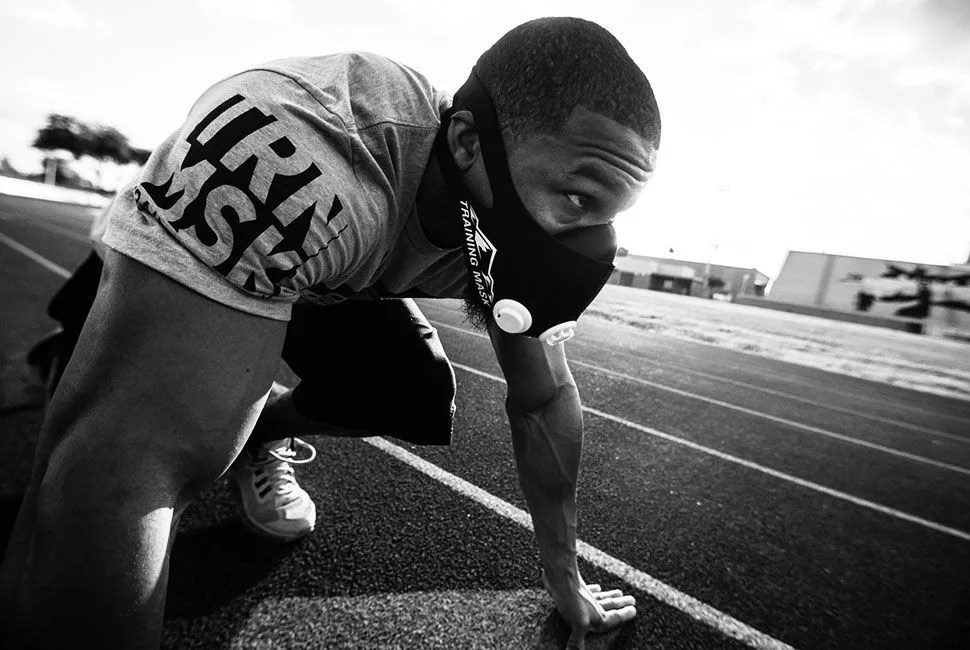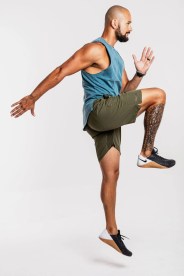You may have noticed an increasing amount of professional athletes using odd masks when they’re working out or warming up — most notably former Seattle Seahawks running back Marshawn Lynch. Those masks are oxygen deprivation masks, made by a handful of companies. The idea behind them is that they restrict the flow of oxygen to your lungs. In other words, it simulates training at altitude, a technique that many top endurance athletes use to their benefit. But truthfully, there are some shaky scientific claims out there regarding these types of masks. To separate the fluff from the facts, we reached out to Juan Delgado, a sports scientist and certified biomechanist who works at the NY Sports Science Lab.
Q: There’s conflicting information out there about oxygen deprivation masks. Some say they make your lungs stronger by restricting the flow of oxygen. Others say that because there is nothing happening on the molecular level, there is no benefit. What’s the real science?
A: Indeed, there is a lot of conflicting information regarding oxygen deprivation training using a device or mask. There is a bevy of articles out there without enough study samples, comparisons with normal levels, or substantiated results to really confirm that it has an effect on your body, much less a performance-enhancing effect by the mere use of this practice. The main premise is that oxygen deprivation training promotes the formation of red cells that will increase the hemoglobin concentration in one’s blood, which in turn will help increase the oxygenation of your body and perform better. This effect is basically an adaptation mechanism of your body to a low-oxygen environment, whether this is due to natural or artificial circumstances — by using a mask or any other oxygen deprivation device, such as hypobaric chambers. However, this phenomenon is not necessarily or exclusively due to the use of masks and/or devices. It could be attributed to the athlete taking deeper breaths that will have more oxygen, but in a lower number of breaths taken.
Another current and popular practice is the “live high, train low” or “train high, live low” premise. It’s based on intermittent exposure to high-altitude, low-oxygen environments (train high) followed by low-altitude periods (live low) where the oxygen levels are high. This allows the body to stave off the detrimental effects of prolonged hypoxia, as well as promoting the formation of red blood cells, hemoglobin and erythropoietin. These are vital cells for the use and transportation of oxygen in our body, that will allow the athlete to perform better and more efficiently. In my opinion, hypoxic training using masks and other devices can indeed have a placebo-like effect for most athletes performing aerobic exercise (most sports), since athletes that utilize it are at a stage of higher-level training than the regular athlete and thus train harder, leading the way to better results in regards of performance.
However, the high-altitude theory can show more grounding since it’s a gradual adaptation practice. The best example being the Olympic training center in Colorado Springs, Colorado, where high-level athletes train for two to three weeks at the time, changing their environment with hard training at a higher altitude to induce these adaptive changes, which are reflected when they come back to their original environment, resulting in a better performance, more endurance, more stamina.
Q: Short of training at altitude, are there products that do work to increase your body’s efficiency when processing oxygen?
A: Indeed, a few examples are:


